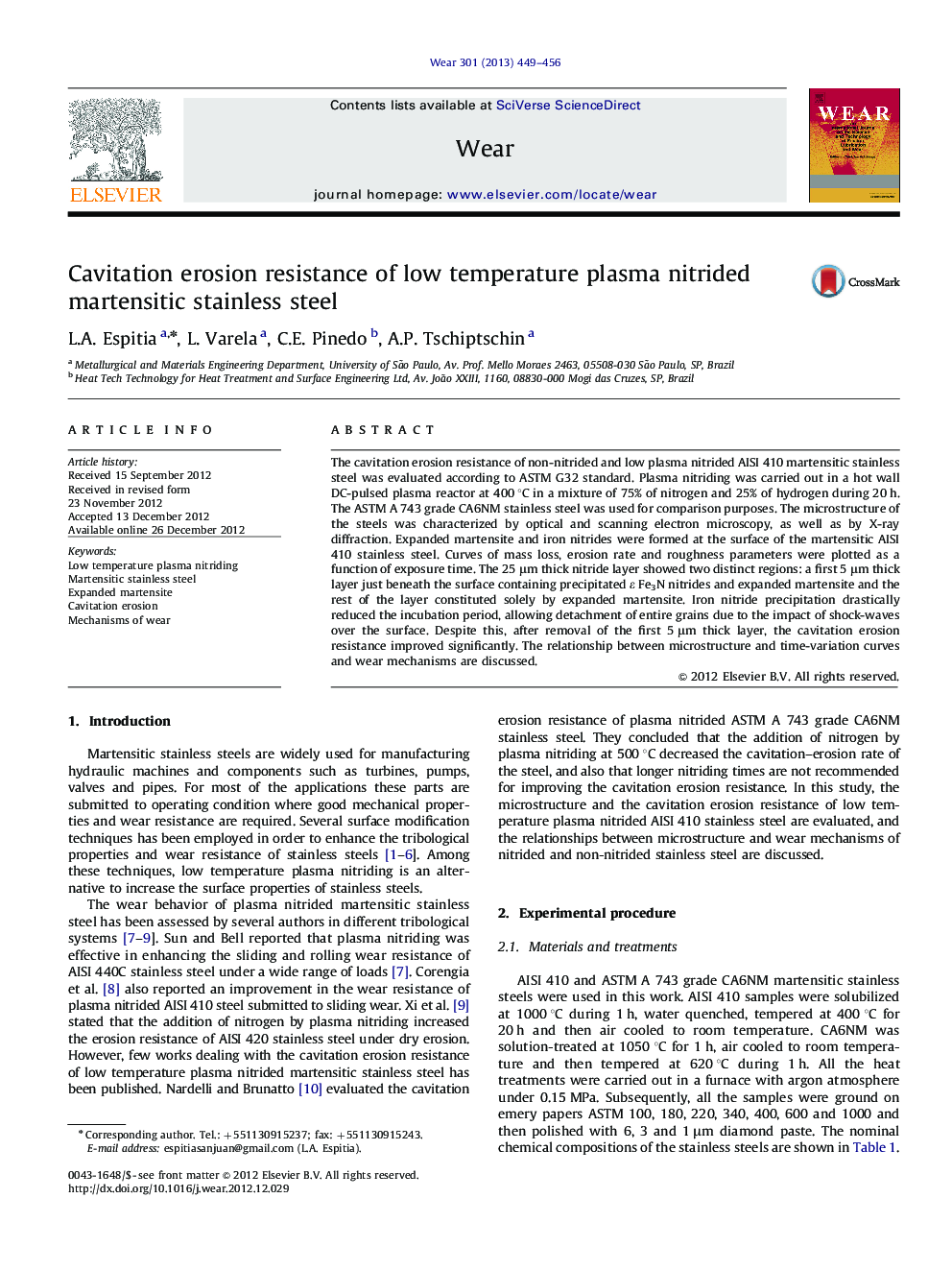| Article ID | Journal | Published Year | Pages | File Type |
|---|---|---|---|---|
| 617553 | Wear | 2013 | 8 Pages |
Abstract
The cavitation erosion resistance of non-nitrided and low plasma nitrided AISI 410 martensitic stainless steel was evaluated according to ASTM G32 standard. Plasma nitriding was carried out in a hot wall DC-pulsed plasma reactor at 400 °C in a mixture of 75% of nitrogen and 25% of hydrogen during 20 h. The ASTM A 743 grade CA6NM stainless steel was used for comparison purposes. The microstructure of the steels was characterized by optical and scanning electron microscopy, as well as by X-ray diffraction. Expanded martensite and iron nitrides were formed at the surface of the martensitic AISI 410 stainless steel. Curves of mass loss, erosion rate and roughness parameters were plotted as a function of exposure time. The 25 μm thick nitride layer showed two distinct regions: a first 5 μm thick layer just beneath the surface containing precipitated ε Fe3N nitrides and expanded martensite and the rest of the layer constituted solely by expanded martensite. Iron nitride precipitation drastically reduced the incubation period, allowing detachment of entire grains due to the impact of shock-waves over the surface. Despite this, after removal of the first 5 μm thick layer, the cavitation erosion resistance improved significantly. The relationship between microstructure and time-variation curves and wear mechanisms are discussed.
Related Topics
Physical Sciences and Engineering
Chemical Engineering
Colloid and Surface Chemistry
Authors
L.A. Espitia, L. Varela, C.E. Pinedo, A.P. Tschiptschin,
